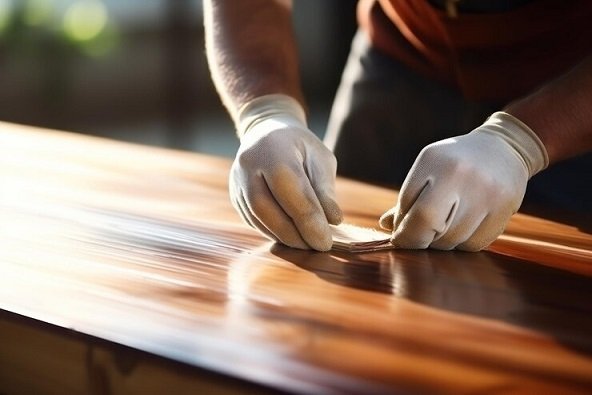Furniture, often considered the cornerstone of interior design, serves both functional and aesthetic purposes. To maintain its allure and extend its lifespan, regular furniture polishing is essential. However, achieving a professional finish requires more than just a cursory wipe-down. In this article, we will explore furniture polishing techniques that not only preserve the integrity of your pieces but also enhance their beauty Furniture polishing.
Surface Preparation Furniture polishing
Preparing the surface of the furniture is crucial before beginning the polishing process. Use a soft, lint-free cloth to begin removing any dust, dirt, or grime. A mild mixture of water and mild dish soap can be used to remove stubborn stains. Before moving on to the following step, check to see that all of the furniture is dry.
Choosing the Right Polish
The key to a successful finish is choosing the right furniture polish. Knowing the material of your furniture is essential because different finishes call for different polishes. Beeswax-based polishes are ideal for wood furniture because they provide a natural, protective sheen without the use of harmful chemicals. For metal or glass surfaces, pick a clean intended for those materials.
Testing in an Inconspicuous Area
It’s a good idea to do a patch test in a hidden area before polishing the entire thing. This guarantees that the clean is viable with the material and won’t cause staining or harm. When you affirm similarity, continue with certainty.
Applying the Polish
When applying the polish, a little goes a long way. Start by applying a small amount to a soft cloth and gently rubbing it into the furniture in circular motions. To ensure an even application, work in small sections. For many-sided subtleties or carvings, utilize a delicate brush to venture into cleft and corners Furniture polishing.
Buffing for a Professional Finish
Use a dry, clean cloth to buff the furniture after the polish has had time to dry. This eliminates overabundance clean as well as bestows a lovely shine to the surface. Polishing ought to be finished with predictable, firm strokes to accomplish an expert completion that features the furniture’s regular excellence.
Frequency of Polishing
The type of finish, the amount of use, and the environment all affect how often furniture needs to be polished. Polish furniture that gets a lot of use every two to three months, while furniture that gets less use may only need to be polished every six months. Customary cleaning improves the appearance as well as gives a defensive layer against mileage.
Dealing with Scratches and Blemishes
Over time, furniture will unavoidably develop blemishes or scratches. Consider employing a specialized scratch cover product that complements the finish of your furniture to address this issue. Apply the cover adhering to the item directions, and tenderly buff to flawlessly mix the fixed region with the remainder of the piece.
Conclusion
Mastering furniture polishing techniques is a rewarding endeavor that not only revitalizes your cherished pieces but also contributes to the overall aesthetic of your living space. By grasping the complexities of surface arrangement, picking the right clean, performing patch tests, and utilizing legitimate application and polishing strategies, you can lift your furniture support to an artistic expression. Your furniture will not only stand the test of time but also continue to exude timeless elegance if it is given regular care and attention.



